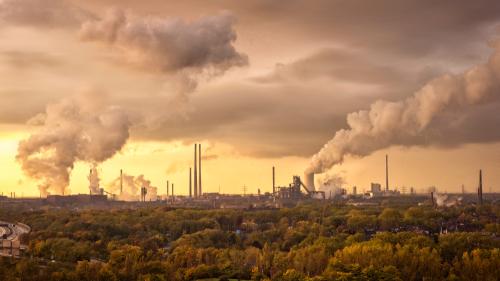A pressing question for policymakers, researchers, and financial advisors is whether private businesses are appropriately positioned for climate-related changes in the physical, economic, financial, and policy environments. Companies may have assets that are at risk as sea levels or extreme temperatures rise, or they may have business models that will become more or less profitable given new carbon taxes or climate policies that promote decarbonization. Firms that are considered more environmentally sustainable or climate-friendly—for example, those better positioned to succeed in a low-carbon world due to their lower carbon emissions—are often referred to as “green” firms, and less climate-friendly ones are “brown” firms.
This paper provides new international evidence on the relative equity returns of green and brown firms since 2010. A variety of mechanisms have been proposed by which a firm’s environmental characteristics may affect its financial performance and cost of capital. Brown firms arguably face greater climate-related financial, liability, and regulatory risks associated with fossil-fuel energy use. As a result, investors in brown firms would require compensation in the form of higher expected returns for holding additional climate risk—that is, a “carbon risk premium.” This premium implies that brown firms face higher costs of capital and lower valuations (price multiples) on projected earnings. Conversely, green assets, which would provide a hedge against climate risk, would provide lower expected returns according to this simple asset pricing theory.
However, previous empirical research yields conflicting evidence on this theory, documenting either a “carbon premium” with brown stocks yielding higher returns, or the opposite, with green stocks outperforming brown. We try to reconcile this work using a range of methods for the G7 countries. We find that green stocks have generally provided higher returns than brown stocks for much of the past decade using actually reported emissions data to define green and brown firms and accounting for publication lags. The outperformance of green stocks was not concentrated in specific episodes but persisted over almost the entire sample period (excluding 2022, as brown stocks outperformed green ones during the extraordinary energy crisis episode).
Bauer and Wilms acknowledge funding by the Deutsche Forschungsgemeinschaft (DFG, German Research Foundation), project no. 509502478. Other than the aforementioned, the authors did not receive financial support from any firm or person for this article or from any firm or person with a financial or political interest in this article. The authors are not currently an officer, director,or board member of any organization with a financial or political interest in this article.
The Brookings Institution is financed through the support of a diverse array of foundations, corporations, governments, individuals, as well as an endowment. A list of donors can be found in our annual reports published online here. The findings, interpretations, and conclusions in this report are solely those of its author(s) and are not influenced by any donation.









